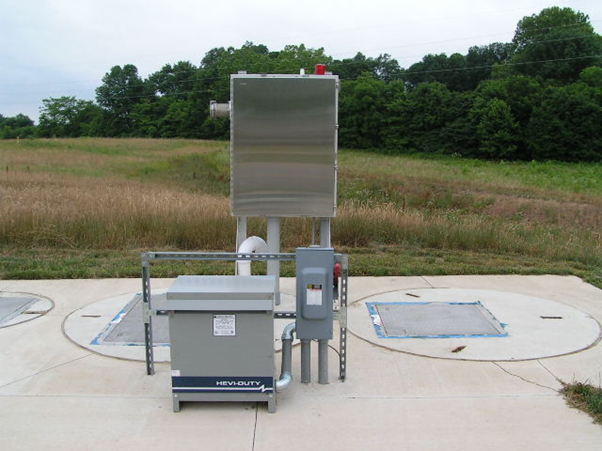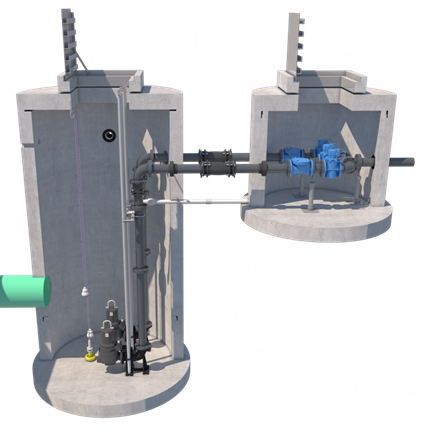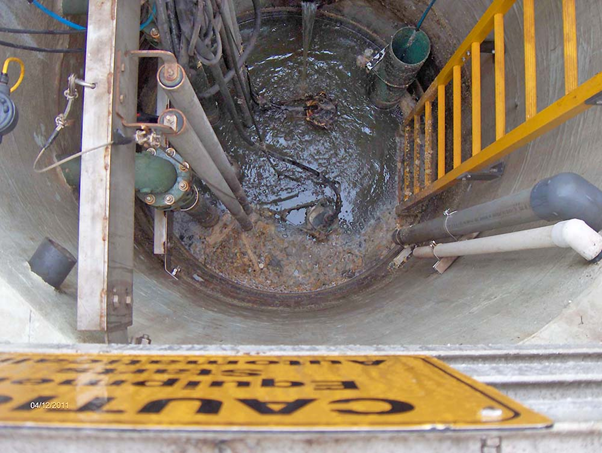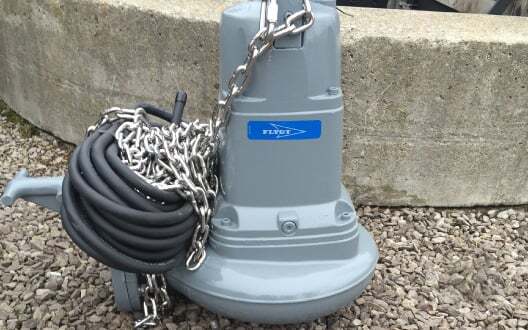Lift Station Maintenance & Repairs in Houston

Does Your Property Have a Lift Station?
These can be associated with either the detention pond or the sanitary system but in essence work the same.
A lift station is a large tank in the vertical position which includes an inlet pipe and 1,2, or 3 pumps and associated floats to turn the pumps on and off as the water or effluent levels rise and fall.
Pumps and lift stations are used when a detention pond or sanitary system has been designed to sit lower than the surrounding drainage infrastructure. In a stormwater pond the pumps will “lift” the water from the bottom of the pond via a lift station and then discharge it up and into a ditch or drainage pipe in the street.
Sanitary lift stations work the same except that the system discharges to a public sanitary line and not to the storm system (In Texas we have separate systems for storm and sanitary).These lift stations can be set up to turn on automatically or manually but are almost always run in automatic mode, using floats to turn the pumps on and off sort of like those used in toilet tanks. Pump longevity is determined not by age but by stop/start cycles. So sizing of the pumps is critical. Too small of a pump and the pump may be constantly on and the system never fully drains. Too large of a pump drains the lift station too quickly, resulting in excessive start/stop cycling. In detention ponds, due to construction budget constraints, we find that these systems are often undersized from the start. This means the detention pond holds water for far too long, in some cases never fully draining between rain events.
Unfortunately, because of their mechanical nature, lift station maintenance and repair in Houston are a reality of ownership. What we find is that most folks are reactive when it comes to lift stations, only giving attention when the system is down, which always happens at the most inopportune time. But did you know that preventive maintenance is necessary to avert the surprise pump failures? This maintenance usually starts with checking the resistance of the electrical controls in the panel. This can tell us just about everything we need to know about the health of the system. If this check reveals problems the next step is often to pull the pumps and inspect them as well. This should be done annually at a minimum to prevent catastrophic failures. Pulling pumps requires a crane truck and so it is a little more costly than a control panel check. Our Houston lift station maintenance team can check the panel as part of our regular inspection, but a comprehensive annual check includes pulling pumps as well to check impellers and seals.


Cleanouts
If your property is in the city of Houston then you already know (hopefully) that lift stations, whether storm or sanitary, need to be cleaned out quarterly and permitted annually. But if you are outside the city there are no rules. But that doesn’t mean you shouldn’t clean these systems with some frequency. Annual or bi-annual cleanouts are an important part of a maintenance schedule in order to get silt, sediment, and trash out of the lift station. The pumps in these lift stations are typically “builder grade” and are not made to lift anything but water and/or effluent. By removing the trash and sediment accumulations, our lift and pump station cleaning experts in Houston will help to protect the impeller from becoming damaged and seals from failing.
Fortunately for our clients, we maintain and service these mechanical monsters. Not only do we provide maintenance and repair to stormwater lift stations across Houston, but also the amazingly fragrant sanitary pumps.
We understand these systems are critical to your operation; therefore, our goal is to always get you back up and running as soon as possible – typically on the same day. Also, our lift station repair and maintenance team in Houston will respond to these issues 24 hours a day, so feel free to call anytime.
Flygt Concertor Pump
We are a proud provider of the Flygt Concertor pump. The Flygt Concertor is a complete solution with integrated monitoring and control that senses the operating conditions of its environment and adapts its performance in real time to provide feedback to station operators. Flygt Concertor takes wastewater pumping to a whole new level with high operational flexibility.

